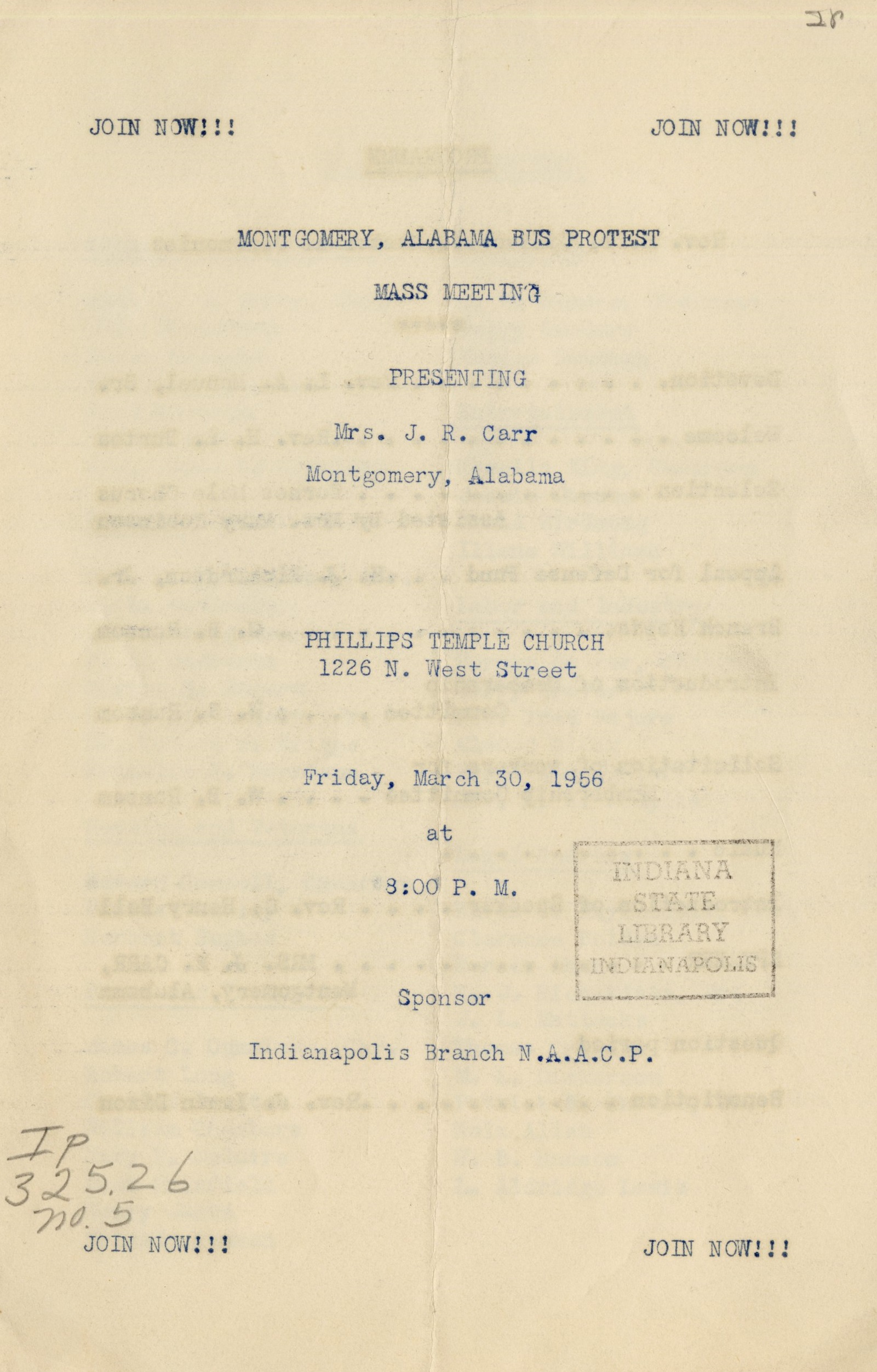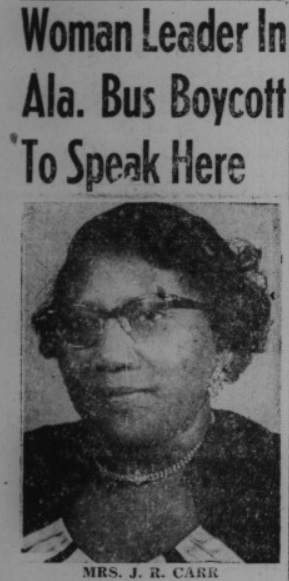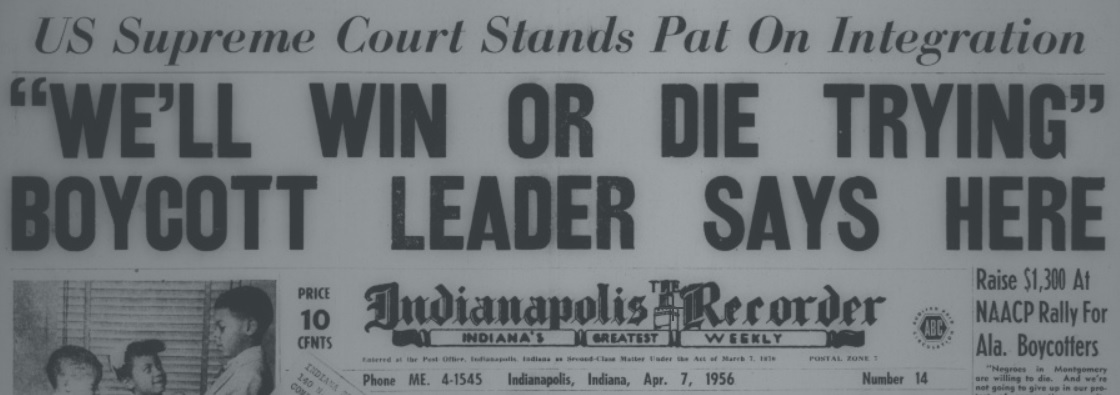Most Americans know how the Montgomery bus boycott began: On Dec. 1, 1955 an African American woman in Montgomery, Alabama named Rosa Parks was arrested for refusing to relinquish her bus seat to a white man. This seemingly innocuous act of civil disobedience led to a year-long boycott of Montgomery’s bus system by the city’s Black population and ended up being one the early battles in this country’s civil rights movement, a campaign which sought to promote and ensure racial equality after centuries of abuse.
Shortly after the arrest, Montgomery’s religious and civic leaders formed the Montgomery Improvement Association. Led by Ralph Abernathy, Martin Luther King Jr. and Edward Nixon, the MIA quickly organized travel alternatives for the boycotters. Privately-owned cars were used for carpools and people were encouraged to walk or bike when possible. Frequent rallies were held in local churches to help bolster the public’s resolve.

First article on the boycott in Indianapolis’s preeminent African American newspaper, the Indianapolis Recorder (Dec. 10, 1955).
Running a months-long boycott of this kind required a great deal of money. Not only did the MIA need hundreds of vehicles for their carpools, but those vehicles also required gas and frequent maintenance. Retaliation against the boycotters was endemic. Many carpool drivers were habitually pulled over and ticketed for minor or non-existent traffic violations. Some lost their jobs for participating in the boycott and needed financial assistance to survive. Representatives of the MIA made their way to other cities, particularly those in the north, to explain the situation in Montgomery and appeal for both public support and funds.
In March 1956, an MIA representative named Johnnie Carr appeared at a fundraiser in Indianapolis, hosted by the local chapter of the National Association for the Advancement of Colored People. Carr was a particularly appropriate person to represent the boycott. Born Johnnie Rebecca Daniels, Carr was a childhood friend of Rosa Parks. She also had been involved in civil rights activism for several years prior to the bus boycott.

Program for Carr’s Indianapolis meeting from the Indiana State Library collection (ISLO 325.26 no. 5).
According to The Indianapolis Recorder’s coverage of the event, Carr spoke to a crowd of over 600 people at the Philips Temple Church and received a standing ovation. Her speech was one of absolute resolve, an assurance that the boycott would continue and that the rights and dignity of Montgomery’s citizens would prevail. The event managed to raise over $1,300 for the boycott cause (approximately $14,000 adjusted for inflation).
Carr’s prediction was correct. After lengthy legal maneuvers, the United States Supreme Court ultimately ruled that Montgomery’s practice of bus segregation was unconstitutional. The boycott officially ended in December of 1956.
The Montgomery bus boycott was an early and important victory in the civil rights campaign. Despite being a local issue to Alabama, it ended up garnering worldwide attention. Much of that was thanks to the tireless work of people like Carr and others in the MIA.
Complete digitized issues of the Indianapolis Recorder, documenting African American life in Indianapolis from 1899 to 2005 can be found on Hoosier State Chronicles.
This blog post was written by Jocelyn Lewis, Catalog Division supervisor, Indiana State Library. For more information, contact the Indiana State Library at 317-232-3678 or “Ask-A-Librarian.”


